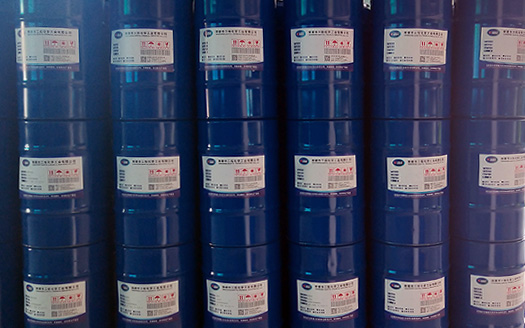Performance and application of micronized wax
Article Source: Santol Chemical Reading: Issuing time:2019-08-09
Ultrafine powder technology is a high-tech developed in recent years. Generally, particles with a particle size smaller than 0.5μm are called ultrafine particles, particles below 20μm are called microparticles, and the aggregate of ultrafine particles is called ultrafine powder. Micronized waxWith its excellent properties, it is widely used in printing inks, paints, and coatings to improve the surface's scratch resistance, abrasion resistance, increase slip, resistance to sticking, non-adhesion, and improve hand feel; improve anti-blocking and anti-stain Performance, can control the gloss of printing inks, prevent pigment settling, and cooperate with matte powder to produce high-performance matte inks and paints, which have become indispensable important additives in the production of paints and inks.Micronized wax is an ultra-fine powder with a particle size ranging from 2 to 30 μm and a wide molecular weight distribution, from about 600 to 6000, and is widely used. Most micronized waxes are made from polyethylene wax, Fischer-Tropsch wax, polypropylene wax, polytetrafluoroethylene, and its modified waxes through various micronization processes. Another part is amide wax, microcrystalline wax, natural wax produced by micronization process.(1) Polyethylene wax: It is made by the direct polymerization of ethylene monomer or by polyethylene cracking. It has a molecular weight of about 1000-5000 and a melting point of 100-120 ° C. Sex, wide range of application. There are many branched structures and the wear resistance is better. The properties of high-density and low-density polyethylene micronized wax are different.(2) Fischer-Tropsch wax: It is a linear wax polymerized by Ficher-Tropsch process using gas as raw material, with a molecular weight of about 500-1000. Lower melting point, excellent smoothness and improved hand feel. The wax has good smoothness, strong feel and easy dispersion.(3) Polypropylene wax: Compared with polyethylene wax, it has higher softening point and hardness, outstanding anti-blocking performance, outstanding abrasion resistance, good resistance to metal scratches, and can prevent pigments and silica in inks and coatings Sedimentation, but the compatibility is slightly worse, and dispersion is difficult. (4) Modified micronized wax: Modified polyethylene wax or synthetic wax with polytetrafluoroethylene to increase the softening point and hardness of polyethylene wax, increase the smoothness, abrasion resistance, scratch resistance, and blocking resistance. Improve the disadvantages of difficult dispersion and high price of polytetrafluoroethylene wax.There are three main ways to prepare ultra-fine powder wax from polymer wax: one is to start with coarse particles, use physical methods such as mechanical crushing, evaporation and precipitation, and melt spraying; The molecules in various dispersed states gradually grow into particles with a desired particle size, which can be divided into two dispersing methods: dissolution and emulsification. Such as PMMA fine powder, controllable molecular weight PP, dispersion polymerization to prepare PS fine powder wax, thermal cracking, radiation cracking to make PTFE fine powder. In China, manufacturers mainly use physical methods to prepare various micronized waxes.
Performance and application of micronized wax: Domestic research and production of micronized wax started late, but the demand is increasing year by year. The scale of production is relatively large, such as Beijing University of Chemical Technology Fine Chemical Plant and Qiqihar University Materials Institute. The foreign polyethylene micronized wax is widely used and has a large demand. Japan produces about 3,000 tons per year alone, and its price is about double that of ordinary resins. At present, due to the low output of China's micronized wax, it can only meet some market needs. The other part of the market demand is mainly imported from Germany and the United States of polyethylene micronized wax products, such as: United States letter, Sanye, Germany's Degussa, Hirst, BASF, Clariant, Japan's Sanyo Chemical Co., Ltd., Japan's petrochemicals, Japan's Mitsubishi Chemical, and Taiwan's Deqian.
Performance and application of micronized wax: Domestic research and production of micronized wax started late, but the demand is increasing year by year. The scale of production is relatively large, such as Beijing University of Chemical Technology Fine Chemical Plant and Qiqihar University Materials Institute. The foreign polyethylene micronized wax is widely used and has a large demand. Japan produces about 3,000 tons per year alone, and its price is about double that of ordinary resins. At present, due to the low output of China's micronized wax, it can only meet some market needs. The other part of the market demand is mainly imported from Germany and the United States of polyethylene micronized wax products, such as: United States letter, Sanye, Germany's Degussa, Hirst, BASF, Clariant, Japan's Sanyo Chemical Co., Ltd., Japan's petrochemicals, Japan's Mitsubishi Chemical, and Taiwan's Deqian.
- What are the reasons for the market acceptance of modified functional resins
- What are the characteristics of modified functional resin
- Zaozhuang feed additive manufacturers wholesale
- What is the difference between matting agents and matting agents
- What are the properties of low melting glass powder used in vacuum glass
- Water-based sand flour product features
- A-9908 special functional resin
- Performance and application of micronized wax
- Interpretation of the application of dispersants in coatings
- Feeling Micro Wax Powder Teflon Feeling Wax Powder


